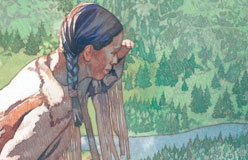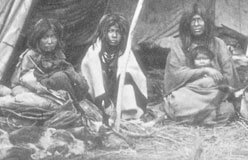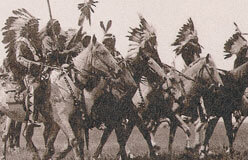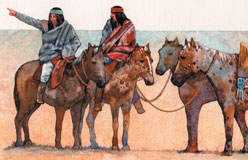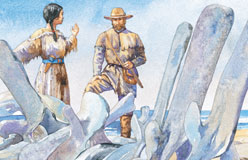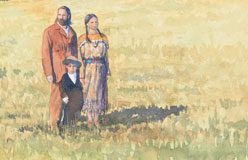On November 8, 1805, the expedition reached the Pacific Ocean and began scouting for a place to spend the winter. Should they stay near the coast? Or should they move back up the Columbia River? Which side of the river should they camp on?
Sacagawea, ever the provider, wanted to settle where there was plenty of wapatoo, an edible root. At one point, the captains took a vote. Sacagawea got a vote, too, as did York, Clark’s slave. It was the first time in American history that an enslaved person and a woman had voted. It would be a long time before that happened again. Eventually, the Corps built Fort Clatsop on a small tributary of the Columbia River. The group stayed there until March 23, 1806.
